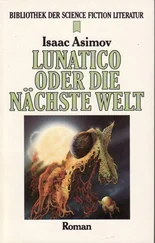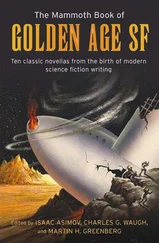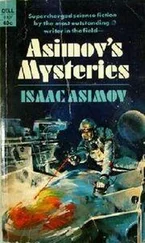Edward Hoch - Isaac Asimov's Worlds of Fantasy. Book 6 - Mythical Beasties
Здесь есть возможность читать онлайн «Edward Hoch - Isaac Asimov's Worlds of Fantasy. Book 6 - Mythical Beasties» весь текст электронной книги совершенно бесплатно (целиком полную версию без сокращений). В некоторых случаях можно слушать аудио, скачать через торрент в формате fb2 и присутствует краткое содержание. Жанр: Фантастика и фэнтези, на английском языке. Описание произведения, (предисловие) а так же отзывы посетителей доступны на портале библиотеки ЛибКат.
- Название:Isaac Asimov's Worlds of Fantasy. Book 6: Mythical Beasties
- Автор:
- Жанр:
- Год:неизвестен
- ISBN:нет данных
- Рейтинг книги:5 / 5. Голосов: 1
-
Избранное:Добавить в избранное
- Отзывы:
-
Ваша оценка:
- 100
- 1
- 2
- 3
- 4
- 5
Isaac Asimov's Worlds of Fantasy. Book 6: Mythical Beasties: краткое содержание, описание и аннотация
Предлагаем к чтению аннотацию, описание, краткое содержание или предисловие (зависит от того, что написал сам автор книги «Isaac Asimov's Worlds of Fantasy. Book 6: Mythical Beasties»). Если вы не нашли необходимую информацию о книге — напишите в комментариях, мы постараемся отыскать её.
Isaac Asimov's Worlds of Fantasy. Book 6: Mythical Beasties — читать онлайн бесплатно полную книгу (весь текст) целиком
Ниже представлен текст книги, разбитый по страницам. Система сохранения места последней прочитанной страницы, позволяет с удобством читать онлайн бесплатно книгу «Isaac Asimov's Worlds of Fantasy. Book 6: Mythical Beasties», без необходимости каждый раз заново искать на чём Вы остановились. Поставьте закладку, и сможете в любой момент перейти на страницу, на которой закончили чтение.
Интервал:
Закладка:
Colin laughed. "Those he says he doesn't need to defend, not any more. But he doesn't want to get fouled up with any committee investigating expensive presents to government people."
"Tell him to take the horse and stop worrying," Ed said, and from his expression Colin could not tell if he was kidding or not. "If they fire him, a growing organization like ours can always use a good man who knows his way around Procurement."
Phoenix
To early agricultural peoples, whose lives depended on the regular and reliable succession of seasons, it became clear thai these in turn depended on the motion of the sun in the heavens. In the regions of the Middle East where agriculture and civilization first developed, the midday sun was always in the southern half of the sky. From noon to noon it rose higher and higher in the sky, but never reached the zenith. By the date we know as June 21, it got as high as it could and began to sink again.
For half a year if sank, until it reached its low point on December 21. and then began to rise again. As it sank the summer passed and ended and it grew colder and colder.
It was clear that if the sun continued to sink indefinitely, all would freeze and life would come to an end. The time of the low point and the turnabout was therefore a time of rejoicing, so many cultures had a period of unrestrained celebration of the winter "solstice" ("sun standstill"). The modern version of this celebration is Christmas.
Naturally, this annual resurrection of the sun, with the promise of a coming spring and a new period of growth, gave rise to all sorts of death-and-resurrection cults. The Egyptians pictured a bird that died annually and was reborn out of its funeral pyre-an obvious sun-figure. The Greeks picked up the legend and visualized the bird as the size of an eagle, and as being gold, red. and purple in color. (These are the colors of the noonday sun, of the setting sun, and of the sky at twilight.) They called it the "phoenix" from a Greek word for "red-purple" and had it die and be resurrected every five hundred years, rather than every year. Since the phoenix was its own parent, it needed no mate, and was pictured as one of a kind.
The following story gives us a very modern version of the myth.
Caution! Inflammable!
by Thomas N. Scortia
When the City Editor of the Gazette received word that a phoenix was building her nest on the very peak of the dome of the city hall, he naturally sent his best reporter speeding to the scene. The reporter, an intrepid young man known for his resourcefulness, decided that little was to be gained by observing the coming immolation from the pavement below and, after bribing a janitor, gained access to the ledge surrounding the base of the dome and climbed the narrow metal ladder to the peak where the bird was engaged in her labors.
"You realize," he said, accosting the phoenix, "that this is a very unorthodox place in which to build a nest, especially with the end you have in mind?"
"I do," the bird said, pausing in its work, "but there is no higher point in this area and I don't have enough strength remaining to make it west to some peak in the Rockies."
"Tell me," said the reporter, remembering his professional duties, "is it true that there is only one of your kind?"
"That's quite correct," said the phoenix, selecting a long shred of cellophane from a pile of debris balanced delicately on the slope of the dome. She began swiftly to weave it into the nest, following an intricately beautiful pattern.
"And when you become old, you build a nest and set fire to it while you are in it?"
"Yes." said the bird wearily.
"And arise reborn from the ashes?"
"Quite true."
"But." the reporter said, frowning, "I thought you were indigenous to the East."
"I was originally," the bird agreed. "However, since the phoenix is a symbol of ever-renewing youth, I decided to migrate to a more appropriate locale."
"Here in the Mississippi Valley?"
"Don't be silly," the bird said. "I was on my way to Hollywood, but I foresaw that I would die before I completed the Hight."
"You can foresee your death, then?"
"Of course, as welt as other events. I have precognition, you see."
"Precognition? That means you can predict coming events, doesn't it?"
"Yes," the phoenix said, beginning to weave a scrap of newspaper into the nest, which was nearly finished.
"Such as the outcome of the next election and who will win the World Series and…"
"Oh, thai and much more," the bird said, settling itself into the completed nest. "But don't ask me to," she said.
"Everyone's always asking for a free prediction. Very exasperating."
"1 had no intention," protested the reporter.
"Yes, you did," contradicted the bird. "Anyway, there's only a few minutes left before twelve."
"Is that when…?"
"Yes," said the phoenix. "Promptly at noon." The reporter paused and eyed the nest.
"That's not quite the nest 1 had expected," he remarked at last. "1 thought you were supposed to use sandalwood and various other exotic plants."
"Now, tell me," the bird said impatiently, "where would I get sandalwood around here?"
"You do have a point," the reporter agreed. "I notice," he added with a small glow of pride, "thai you have used my paper as part of your nest." He pointed to a large piece of newsprint bearing the masthead The Gazette and a black headline below.
"Yes. Not a very satisfactory texture, however." The phoenix squirmed uncomfortably. "Do you have the correct time?" she said.
"It's one minute to twelve," the young man offered.**I suppose you ignite spontaneously?"
"I'm afraid that part of the legend isn't quite true," tile phoenix sighed. "Usually in the past I've had help."
"Oh," said the reporter, "I didn't know. Can I offer you a match?"
The bird eyed the shred of newspaper whose black headlines said: "AEC to Test Nitrogen Super-Bomb Today Noon."
"That will not be necessary," she said.
Sphinx
An obvious symbol of divine strength might be a human body with a lion's head, or, in reverse, a lion's body with a human head. The lion. after all. was a particularly feared predator, a.'id the ' 'king of beasts.''
The Greek griffins, as f explained earlier, were creatures with the torso of a lion and the head and wings of an eagle. An only slightly different composite was one with the torso of a lion, the wings of an eagle, and the head and breasts of a woman.
Such a creature was pictured as a fearsome monster from whose grasp no human being could escape. It was called a ' 'sphinx'' from a Greek word meaning ' 'to hold tightly."
The most famous sphinx in the Greek myths was one that existed just outside the city of Thebes and that stopped travelers going to that city. It posed a problem to them:
"What goes on four legs in the morning, on two at won, and on three in the evening?" Failure to answer correctly meant death. The Greek hero Oedipus, however, guessed correctly that the answer was the human being, who crawled on all fours in the morning of life, stood upright on two legs in maturity, and needed a cane in old age. The sphinx then killed itself in frustration.
The Egyptians would occasionally build lions with the heads of reigning monarchs, simply to show the strength of the monarch and, through him, of the nation. This was sympathetic magic. Showing the nation to be strong would keep it strong in actuality. (We're familiar with that sort of thing today, too.) The most famous Egyptian sphinx is the very large Great Sphinx built in connection with the Great PyramidThis Egyptian sphinx is featured in the following story.
The Pyramid Project
by Robert F. Young
Интервал:
Закладка:
Похожие книги на «Isaac Asimov's Worlds of Fantasy. Book 6: Mythical Beasties»
Представляем Вашему вниманию похожие книги на «Isaac Asimov's Worlds of Fantasy. Book 6: Mythical Beasties» списком для выбора. Мы отобрали схожую по названию и смыслу литературу в надежде предоставить читателям больше вариантов отыскать новые, интересные, ещё непрочитанные произведения.
Обсуждение, отзывы о книге «Isaac Asimov's Worlds of Fantasy. Book 6: Mythical Beasties» и просто собственные мнения читателей. Оставьте ваши комментарии, напишите, что Вы думаете о произведении, его смысле или главных героях. Укажите что конкретно понравилось, а что нет, и почему Вы так считаете.








